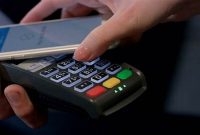Phone payments have taken the world of ecommerce by storm and have made shopping easier and more seamless than ever before. But with so many options available, it can be difficult to know where to start. That’s where our step-by-step guide comes in. Whether you’re a business looking to add phone payments to your checkout process or a consumer looking to learn more about mobile payment options, our guide will walk you through every step of the process. From setting up your phone payment system to ensuring maximum security, our guide covers it all. So get ready to master phone payments and streamline your shopping experience!

The Basics of Phone Payments
Phone payments, also known as mobile payments, refer to the transactions made through a mobile device such as a smartphone or tablet. It’s a convenient and secure way to make payments without the need for cash or physical cards. There are various types of phone payments, including:
Contactless Payments
Contactless payments allow customers to pay for goods or services by tapping their mobile device on a contactless card reader. This technology uses Near Field Communication (NFC) to enable quick and seamless payments. Contactless payments are available on both Android and Apple devices, allowing customers to use their preferred device for payments.
In-App Payments
In-app payments allow customers to make purchases within a specific app using the payment details stored on their device. This type of payment is common for in-app purchases such as game credits or subscriptions. In-app payments are quick and convenient, allowing customers to purchase without the need for entering payment details multiple times.
Carrier Billing
Carrier billing allows customers to add purchases to their monthly mobile phone bill. It’s a quick and easy way to make payments for low-cost items such as digital downloads. Carrier billing is available on selected mobile networks and requires customers to confirm payments through text messages or other verification methods.
QR Code Payments
QR code payments allow customers to make payments by scanning a QR code displayed at the merchant’s point of sale. It’s a convenient way to make payments as it avoids the need for entering payment details. QR code payments are commonly used in Asia and are becoming more popular in other regions.
How to Set Up Phone Payments
Phone payments are becoming increasingly popular, and businesses that haven’t yet offered this payment method need to catch up. In this subsection, we’ll outline the necessary steps to set up phone payments so that you can get started.
Step 1: Find a Payment Provider
The first step in setting up phone payments is to find a payment provider. Numerous providers offer phone payment services, and choosing the right one can be challenging.
Spend some time researching payment providers to find out which ones offer the features you need. Take into account transaction fees, compatibility with your phone system, and customer support when choosing a payment provider. You should also ensure that the provider you choose is PCI DSS compliant to ensure that customer information is secure. Once you have selected a provider, you can proceed to the next step.
Step 2: Choose a Payment Method
After selecting a payment provider, the next step is to choose a payment method. Phone payments methods come in several flavors, and you’ll need to decide which to adopt. Here are some of the most common:
- IVR Payments: This is the most popular payment method, where customers use their keypad to input payment details.
- Voice Payments: With this option, customers dictate their payment details over the phone.
- SMS Payments: This method uses text messages to confirm payment details.
Choose the payment method that is best suited to your business. IVR payments are the most popular option for phone payments, but voice and SMS payments may be more appropriate for some businesses.
Step 3: Integrate the Payment System with Your Phone System
The final step in setting up phone payments is to integrate the payment system with your phone system. This process varies depending on your payment provider, but most providers have detailed instructions on how to integrate your payment system with your phone system.
If you’re uncertain how to proceed, ask your payment provider for assistance. They’ll be happy to walk you through the process and ensure that your phone payment system is integrated correctly.
By following these three steps, your business will be ready to accept phone payments, which can improve customer satisfaction and boost your bottom line.
Security Measures for Phone Payments
Phone payments offer a convenient way to buy products and services without the need for cash or card payments. However, phone payments also pose inherent risks to individuals and businesses. Thus, it is essential to be cautious and take security measures when using phone payments.
Protecting Your Data from Scams and Attacks
Scammers and hackers can exploit phone payments to steal sensitive information and commit fraudulent activities. Here are some ways to safeguard your data and prevent scams:
- Use strong passwords and biometric authentication to secure your phone and payment apps.
- Avoid clicking on suspicious links and downloading unverified apps or files, as these may contain malware that can compromise your phone’s security.
- Check the legitimacy and reputation of the payment providers and merchants before making transactions.
- Be vigilant against phishing scams, where attackers disguise themselves as legitimate entities to obtain your login credentials or personal data.
Securing Transactions with Encryption and Verification
To ensure the integrity and confidentiality of your phone payments, encryption and verification technologies are implemented. Here are some features to look for:
- End-to-end encryption: This means that the data is encrypted from the moment it is entered into the payment app until it reaches the recipient, so that only the intended party can decrypt and access the information.
- Two-factor authentication: This involves requiring multiple forms of identification to verify the legitimacy of a transaction, such as a password and a one-time code sent to your phone.
- Transaction alerts and monitoring: This feature notifies you of any unauthorized transactions or suspicious activities on your phone payments account, so that you can take immediate action to prevent further damage.
Complying with Regulations and Best Practices
Phone payments are subject to various legal and regulatory requirements to ensure fairness and security for all parties involved. Here are some examples:
| Regulation | Description |
|---|---|
| PCI DSS | The Payment Card Industry Data Security Standard sets the guidelines for protecting payment card data from theft or fraud. |
| GDPR | The General Data Protection Regulation mandates the collection and processing of personal data with respect to users’ privacy and consent. |
| Consumer Protection Act | This law ensures that consumers’ rights are protected, and they have access to complaint mechanisms and redress in cases of fraud or misrepresentation. |
By complying with these regulations and best practices, businesses can avoid legal liabilities and reputational damage, while consumers can enjoy greater peace of mind and trust.
Phone payments are a convenient and secure way to transact, as long as you remain wary of potential threats and take the necessary precautions. By following these security measures, you can master phone payments and enjoy the benefits of fast and easy transactions.
Advantages of Phone Payments
Phone payments have become more popular in recent years due to their numerous advantages. In this section, we will highlight how phone payments are convenient, accessible, and provide an improved customer experience.
Convenience
Phone payments are incredibly convenient. They eliminate the need for customers to carry cash or cards in order to make purchases. By using phone payments, customers can easily and quickly pay for goods and services without having to take out their wallets. Additionally, phone payments can be made from anywhere at any time, as long as there is a connection to the internet. This convenience not only benefits the customer but also benefits businesses as it allows for quicker and more streamlined transactions.
Accessibility
Phone payments are also incredibly accessible. They can be used by anyone with a smartphone, which is a large percentage of the population. This accessibility allows for a wider range of customers to make purchases without needing a traditional bank account or credit card. This is particularly beneficial for individuals who are unbanked or underbanked, as it provides them with an alternative and accessible payment option. Additionally, phone payments can be used internationally, making it easier for global transactions.
Improved Customer Experience
Phone payments provide an improved customer experience. They allow customers to make payments quickly and easily, reducing the amount of time spent waiting in line or fumbling with cash and cards. Additionally, phone payments provide a sense of security as transactions can be monitored and tracked. This creates a more trusting relationship between customers and businesses. Moreover, phone payments can offer rewards and loyalty programs, providing customers with incentives to continue using the service.
Cost-effective
Phone payments are cost-effective for both businesses and customers. By eliminating the need for cash and cards, businesses save money on handling fees and transaction costs. Additionally, phone payments provide customers with alternatives to more expensive payment methods, such as wire transfers or international credit cards. This affordability makes phone payments an attractive payment option for both businesses and consumers.
Disadvantages of Phone Payments
While phone payments offer convenience for customers, there are some potential drawbacks to consider. It is important to take these into account before making a decision to implement phone payments for your business.
Risk of Fraud
One of the main disadvantages of phone payments is the risk of fraud. Phone payments require the sharing of sensitive information, such as credit card numbers, over the phone. This information can be intercepted by third parties and used for fraudulent purposes.
Business owners who implement phone payments need to take measures to ensure that customer information is secure. This can include using encryption technology and restricting access to customer data.
Human Error
Another potential disadvantage of phone payments is the risk of human error. Payments made over the phone may be subject to mistakes, such as miscommunication of payment amounts or the entry of incorrect payment information.
To minimize the risk of human error, businesses should implement strict payment protocols and train their employees on correct payment procedures.
Unreliable Phone and Internet Connections
Phone payments rely on a stable phone and internet connection. If either of these connections is unreliable, it can lead to issues with processing payments.
Businesses should have backup plans in place in the event of connectivity issues. This can include offering alternative payment methods or ensuring that employees have access to stable phone and internet connections.
Lack of Personal Interaction
Phone payments lack the personal interaction that many customers value. When payments are made over the phone, customers don’t have the opportunity to meet with an employee in person and ask questions or receive assistance.
Businesses should consider offering additional customer support options, such as online chat or email, to help mitigate this disadvantage.
No Record of Payment
With phone payments, there is no physical record of the payment. This can make it difficult to track payments and process refunds if necessary.
Business owners should ensure that they have a system in place for tracking phone payments, such as an electronic receipt system, to help mitigate this disadvantage.
Best Practices for Phone Payments
Phone payments are an efficient and convenient way for both customers and businesses to make transactions without the need for physical exchange. However, it’s crucial to follow best practices in order to provide a smooth and secure payment experience. Here are some tips for individuals and businesses looking to optimize their phone payment process:
Train Employees on Proper Procedure
It’s important for employees processing phone payments to be knowledgeable and well-trained on the steps involved in the process. They should know how to properly identify the customer, input payment information accurately, and verify the transaction before finalizing it.
Provide Clear Instructions to Customers
Customers should be given clear instructions on how to provide their payment information, such as credit card numbers and security codes. It’s essential that they know how to enter this information precisely to avoid errors and prevent fraudulent activity. Consider providing step-by-step instructions or a visual guide to help customers feel confident in completing the payment process.
Verify Each Transaction
Before finalizing a phone payment, it’s important to verify the transaction details and ensure that all information provided is accurate. This includes confirming the customer’s identity, double-checking the payment information, and reviewing the transaction total. This step can prevent misunderstandings and disputes that may arise later on.
Implement Secure Payment Methods
Security is a top priority in phone payments, as customers are entrusting their sensitive payment information to the business. It’s crucial to use secure payment methods and ensure that all data is encrypted during transmission. An additional layer of security can be provided through the use of two-factor authentication or a token system to confirm the customer’s identity.
Be Transparent About Fees and Policies
Make sure that customers are fully aware of any fees or policies associated with phone payments before they complete the transaction. This can include processing fees or policies regarding refunds or cancellations. Being transparent and upfront can help prevent any unexpected surprises or issues later on.
Keep Detailed Records
It’s important to keep detailed records of each phone payment transaction, including the customer’s name, payment amount, transaction date, and any notes or comments. This can help with accounting and provide evidence in the event of a dispute or chargeback.
Frequently Asked Questions
| Questions | Answers |
|---|---|
| What is phone payments? | Phone payment is a type of payment transaction that allows consumers to make a purchase by charging it to their mobile phone bill or transferring money via mobile applications. |
| Are phone payments secure? | Yes, phone payments are secure. They use encryption technology and secure gateways to protect your sensitive financial information. |
| What are the benefits of phone payments? | Phone payments are convenient, fast, and secure. They eliminate the need to carry cash or credit cards and allow you to make a payment from anywhere, anytime. |
| Which companies offer phone payment services? | Many companies offer phone payment services, including PayPal, Google Wallet, Apple Pay, and Samsung Pay. |
| How do I set up phone payments? | To set up phone payments, you will need to download and install the mobile payment app, add your payment method, and follow the on-screen instructions to verify your identity and payment information. |
Thank You for Reading
We hope you found this step-by-step guide helpful in mastering phone payments. With phone payments, you can enjoy the convenience and security of making payments from anywhere, at any time. If you have any questions or suggestions, please feel free to contact us. Thank you for reading, and please visit us again later for more informative articles.




